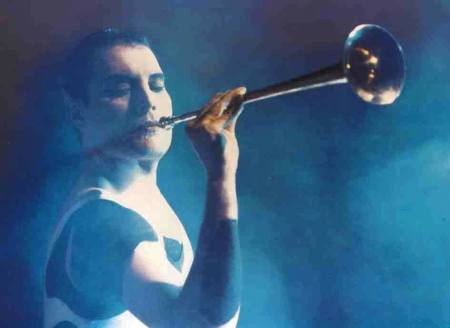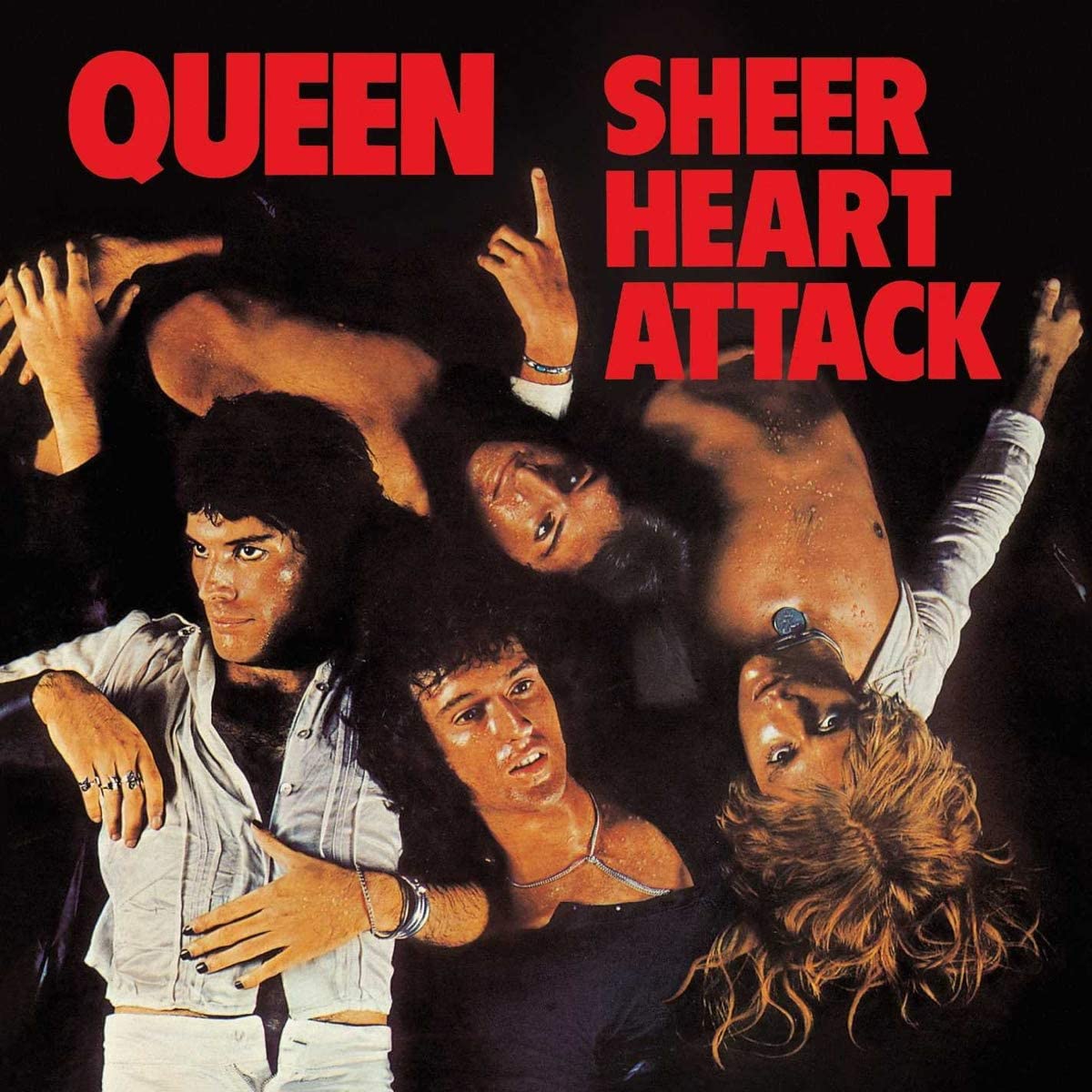Never like in the decade of the 70’s, musicians belonging in particular to the rock world – thanks to a new sensibility and an aesthetic that provides major open mindedness on more levels – they appear on stage (and more generally in public) with a more cured and researched look that gives a major contribution to transmit an image of their own music.
Such a choice in scenery costumes (and aesthetics in general) reveals to be sometimes willingly excessive, with the aim on the one hand to scandalize and attract the attention of the media – on the other to be immediately recognised by their fans, that in this decade increase in number and pay more attention to their idols.
Frivolous themes connected to everyday life of the previous years (one must think of the first lyrics of the Beatles and Elvis Presley) are at this point only a remembrance, and the evolving of the scenery costumes at a social level after the 1968 revolution, reflects and amplifies also in the pop musical world in which the musician on stage assumes a more mediatic capacity, both for the always increasing number of exhibitions (and of viewers) and for the importance that the stage aspects assume in their togetherness (lights, scenery, various effects and not least scenery costumes): the stage becomes yet a place of shows always more complex and articulated, a place rich of thematic implications and more suggestive for the viewers, their sensibility towards their musical favourites matured and grew progressively.
In this optics where the image goes parallel with that of music (and in these years also the first promotional video clips in a modern manner understood and forerunners of MTV), the aesthetics and the glam (Note 1) philosophy provides a valid support and suggests the performers the way to present themselves and what attitude to use on stage.
An artistic management that had a deep influence in the attitude proposed during the live exhibitions of Queen is that of the ballet and dance, and in particular the Russian but of Polish origins dancer and choreographer Vaslav Nijinskij (1889 – 1950; Note 2) he is the person who dictated the choice of the scenery costumes of the singer Mercury – who was already attracted in the beginning of his carrier by the unusual dressing of the guitarist Jimi Hendrix and of the oriental style of clothing – that led him in future choices – like participating to a Royal Ballet show in 1979 (Note 3) or the citing of the “Le Sacre du Printemps” in the scenery of the promotional video clip (Note 4).


I’m into this ballet thing, and that’s why I’m trying to put across this Nijinsky costume; and trying to put across our music in a more artistic manner than before. A lot of people just dismiss it and say I’m wearing a silly little outfit, rather than being critical and saying that formal ballet may not be quite right for rock ‘n’ roll. (Freddie talking about Nijinsky and ballet in an interview by Tony Stewart for NME, 18 June 1977)





Another Russian dancer and choreographer important for the stylish expressions of Queen’s leader was Michel Fokine (1880 – 1942) whose programme points (Note 5), that had to have as a basis the 1900 ballet, seem to relive the choices of Mercury on stage, in the exterior and dressing aspects:
- create new steps that were not a stereotype but that corresponded to the subject that was being treated.
- the miming and the dancing were to serve as a dramatic action and not used as a simple enjoyment inside a pantomime
- the use of gesture only when required expressively by the style of the ballet
- the corps de ballet must have been expressive in it’s entirety and not as a simple ornament
- the union of dancing with the other arts
So it is the first fase of the Russian Ballets – and their artistic will to be free from the prevailing formalism (Note 6) – that exercises a major influence and mainly the costumes and stage design of Léon Bakst (1866-1924), rich in oriental influence and of strong colours, that allowed the dancers to hover on stage like they belonged to a new mystic dimension.

It is possible to trace the evolution of the “scenery costumes” used by Queen, and by Mercury in particular, during the years and their tours. We must take notice that most of the artists in that period appeared on stage with a t-shirt and jeans (or dressed all in a similar way, without taking notice of the group’s look, or the individuality of one of the members in particular) – confirmed by the guitarist Brian May – without taking care of their looks on stage, and so a reckless choice like that of Mercury and friends is to be read as an era change in costumes on stage, besides the use of make –up (nail varnish, wigs, eyeliner etc…) and the use of jewellery.
It is a new way to present and to expose a precise aesthetics; the ones used to go “on stage” at the beginning of a concert are accurately studied – specially in the 70’s – also by an aimed effect of smoke and lights on stage and on the artists, and on all that implies a theatrical planning, close to some styles belonging to classical ballet, to which Mercury is in a particular way inspired.


One must also notice that the changing of the costumes in the same concert becomes more frequent, and this detail is addressed to an aesthetical choice surely not common in the musical panorama of Rock music in those years, but shows even more the particularity of the group formed by Mercury and friends.
Also on the lyrics level, we can find themes that have do to with dancing: in these cases the themes cited are always accompanied by a kind of music that not only underlines what is sung, but it amplifies it. In this way there is a contact – at a semantic level – among three communicating worlds that analyze the same aspect (that of the movements of the body in space) with means properly musical, literally and of dancing.
The thematic profiles of major interest are those regarding the opposition in the first concerts between white and black (opposition already present at a dramatic and musical level in the album “QUEEN II”) that uses striking and willingly false jewellery. It’s a dichotomy in which the Dionysian and Apollonian matrix don’t annul one another but complete each other, creating a delicate balance that musically and visually permits the show to take form as a dramatic event.
Or again (in the case of the stylish costume used for the promotional video of We Are The Champions in 1977) appear at the same time both the colours, creating an effect mainly for the spectators sitting in the front lines in respect to the singer:

In a few years thanks to the cooperation of the stylist Zandra Rhodes (co-operator of other musical groups influenced by the Glam aesthetics like the T-Rex) other costumes come to life, like the famous angel costume – with wings – strongly wanted by Mercury:


Other scenery costumes in the future years don’t leave behind close fitting clothing and the idea of the leotard becomes itself a jewel to wear and to show in public thanks to the use of sequins:


You can then find costumes that uses a chess design inspired by Harlequin, with sometimes the use of a mask to cover the face that majorly underlines the carnival effect of the costume and increases the global scenery effect:


In the same years we find costumes realized with geometrical themes like a vertical chess board with the adopting of vertical stripes, always favouring the dichotomy between the two colours far from one another, black and white, and using light coloured shoes a clear derivation from the classical ballet:

Strong are also in the costumes of the singer and front man of Queen the influence of oriental clothing like kimonos or ample dressing gowns that create a suggestive movement on the scenic space (specially when both the arms are open wide) giving place to a theatrical scenery on stage typical of the 70’s and only partially re-used in future exhibitions:

We can affirm that the research of scenery costumes throughout the years will disappear, parallel to an easier musical complex and a text structure relatively simpler and less articulated. Nonetheless the originality of the expressive forms – musical, aesthetic and costumes – is not influenced by other contemporary currents (like the searched look of blazer and tie in the 80’s by the English New Wave is never considered by Mercury and friends, that remain faithful to their choices without being influenced by contemporary fashion).
In general Queen go from an homogenous look from their origins – and that partly reminds the public of the Beatles that only dressed alike but also adopted identical hair cuts – to a more individual and independent one that if on the hand leaves space to personal tastes on the other brings out a major stylish variety.
The soloist career of Mercury and his promotional video clips don’t exclude the use of special effects and a researched scenery: it is therefore possible to talk of musical iconography also for the costumes used by the musicians during their concerts, this expressive way (in the same way as the cover of the Lp’s, of the singles or of videos like the promotional photos) contribute to showing the real and proper image of the artist.
Regarding Queen’s career only a couple of their record covers show an aesthetic choice (Note 7), in some way conditioned by Glam (it is manifested in the costumes and in the position of the four artists in the final photo), for the precision the albums “QUEEN II” and “SHEER HEART ATTACK”, it’s not a case that they were both published in 1974 and both with photos of the photographer Mick Rock, already author of other contemporary Lp’s covers:


The song in pop music is a cultural product that has an intermediate and intertextual, so also the analysis of iconography (and of all that that is directly connected to it: scenery costumes, clothing, jewels and scenery) during the concerts allows to understand the artist better and to place him in a cultural reference sphere.
Music is identified with the artist, that becomes the unique show stealer. The audience don’t want to listen, they want to see: the performance is not the listening of the interpretation of the songs, like in the traditional pre-Rock and Roll: it’s the vision of a dramatic scene put up by music and of an actor who interprets, the musician […] In this dimension the pop performance is distinguished by other types of performances (theatrical, film wise and television wise): an immediate communication feedback and an interaction with the artist is requested from the public – the musician that plays an instrument […] The performance of pop music intended as communication is the creation of a text by means of act […] From a communicative point of view, pop performance in other words is the dramatized representation of one or more songs: like such it uses a theatrical language. […] Pop performance is then the putting up of a show of a symbolic universe in which the actors (the musicians and the public) communicate and swap messages: the songs become one with the body movements [and costume choices] of the interpreter and of the scene. The pop performance was born as a musical interpretation, but it becomes a recital tout court. This dramatized version of pop performance is particularly evident if you think of the English meaning of the verb “to play”, that is translated as to “play” (music) […] or as to play (theatre wise) […]. As of dramatizing one or more songs, each performance –“ live” – or medial (like video clips) is based on a series of codes and conventions that derive majorly from the theatre. (Note 8)
In this language of live exhibitions (and more generically in concerts), is where the presence of scenery costumes, choreography and scenery are identified as a semantics text :
Pop performance is a bodily story […] it’s a sort of “rhetorical gesture” in which acting (the use of the space to interact in, takes form like the relationship between stage and stalls) prevails on all other kinds of messages. In the pop performance the body of the performer is used like a text, to which is given meanings that are part of the story of the performer. One can identify two kinds of meanings given to the body of the performer:
- the visible presentation of the body (the look)
- the movements as signs: the non verbal communication (gesture and dancing). (Note 9)
The scenic presence is a direct and immediate contact of an image regarding the public – and on the other hand to the media – it is less mediumistic in comparison to other means: these peculiarities make it a “theatrical” event by all means.
© Nicola Bizzo
(1) The Glam Rock or Glitter Rock is a kind of Rock & Roll that was popular in the 70’s, especially in the U.K. and in the major U.S. cities like New York and Detroit, and progressively it came to an end (except for some groups that tried to revive it at a distance of nearly thirty years like Darkness or similar). This kind of music gets its name by the kind of dressing they used “Glamour”, it researches a cured, coloured and striking look that characterizes the exponents during their public appearances like the meetings with the press or the presentation of a record. Born like a main British phenomenon, and the major popularity is found between the 1971 and 1973, in the United States this kind of music has a lower level of success due to a more conservative vision, none the less it present with groups like the Kiss, New York Dolls, or in the area of Detroit with groups like Iggy Pop, Alice Cooper and others. This kind of music is distinguished by their scenery costumes made of aluminium foil, glitter, sequins, studs and other striking and sparkling objects (very characteristic is the showing off of false jewellery), nevertheless not very different by the ones showed off by Liberace, Elvis Presley and other artists during their performances in public places; it is also true that a few stylists take care to design original costumes that can increase the impact of the artist on stage. One of the best examples in these years is David Bowie in his “Ziggy Stardust” and “Aladdin Shane” period, that loved to surprise the public and the critics appearing always in strange ways. The artist often show a sexual ambiguity and in general a costume freedom partly given by the previous decade and partly dictated by the will to shock. Among the founders of the Glam Rock are often indicated, Marc Bolan, guitarist, singer and leader of T – Rex, and David Bowie. Other important exponents were the Slade, Mud, Gary Glitter, Sweet, Mott the Hoople, Queen and the first Roxy Music with Brian Eno. It is a common use in the period throughout the 70’s to appear on stage not only with what fashion in that period requires (it being Glam or not) but with the declared willingness to surprise and to scandalize; and so in this particular iconography it is possible to cite other artists – like Elton John or the Aerosmith – not declared Glam but that appear in public with striking and willingly excessive clothing (and that often cite other costumes). http://en.wikipedia.org/wiki/Glam_rock.
(2) The sketch for Nijinsky’s costume to which we refer was designed by the Russian artist and costume designer Léon Bakst, (collaborator of Diaghilev) around 1912 for the show “L’Après-midi d’un faune” with music of Debussy and inspired by the homonymous poet of Stéphane Mallarmé, a script fundamental not only for the history of French Symbolism, but aware of the development of modernism in art.
(3) For more details see JACKY GUNN & JIM JENKINS, Queen – the official biography, Milan, Arcana Editrice,1993, pages 139-140.
(4) Also the video I want to break free (later cited in that of The Great Pretender) recreates the atmosphere of “L’Après-midi d’un faune” of Debussy, a ballet brought to fame by Nijinskij. For the scenes taken from the “Le Sacre du Printemps” the song of reference, and as a consequence the promotional video, is Made in Heaven.
(5) Such programme points were published on the The Times of London in 1914.
(6) Also in the world of painting and of contemporary visual arts there is a research of a new dynamism, and not intended only in the futuristic sense.
(7) The creation of a definite image across the LP covers does not take place. Something that happens with other contemporary groups as Pink Floyd that thanks to the works of the artist Storm Thorgenson build a visionary and surreal imaginary.
(8) GIANNI SIBILLA, I linguaggi della musica pop, Milan, Bompiani 2003 pages 164 and following.
(9) Ibidem
Related Articles


You must be logged in to post a comment.